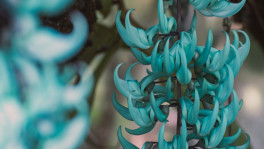The grand forefather of the domestic stock
It was a wintry morning in the Sundarbans. Without haze and under the gleaming sun, the forest seemed promising. I was to start the wooden trail walk but could not resonate with my surroundings the way the mangrove did.
I was trailed by a train of students who were with me on this expedition – curious, jabbering about almost everything. Leading and herding, I was trying my best to keep an eye on the wildlife.
It turned out to be rewarding
At the midway of the expedition – as the team walk resembled a march-past – to my left, I spotted a red jungle fowl. It was a remarkably vibrant male, alone, about only 20 feet away, and surprisingly indifferent to any sound.
The next minute something otherworldly unfolded. The broken sunlight through the canopy worked like a spotlight on the bird, it was foraging through the aerial root network. We walked passed as the jungle fowl walked in parallel to the trail. It leisurely trotted into the bush.
At that point, only the tail of my 84-member team was left to pass that particular bush. The bravery and majesty of the bird, the daybreak in the mangrove, and the timing of the sighting altogether tattooed my brain with a worthy memory.

Whenever there is a topic on the red jungle fowl, the moments make a whale-breaching. It did the same when I was requested to write a story on the bird. And, do not forget that the wild fowl is the forefather of all domesticated fowls.
Without the domestication of the wild fowl there would not be any fast-food chain. So, below is a tribute – to my memory and to the forefather of all domesticated fowls. Well, if you want to watch a jungle fowl in the wild, there is a brief how-to as well.
An Asian hard-nut-to-crack species
The first of the fowl to walk on the earth, in a jungle or barnyard, was born right in Asia. Look at the present distribution pattern, the truth will become evident to you. From the Philippines to the archipelago of Indonesia in the west to Indochina and as far as to the Indian subcontinent in the east, the jungle fowls are known to exist.
Even in the age of extinction and against all odds, jungle fowls are living rather well than others. Thanks to their adaptability and little requirement for palate.
Gallus: Daring and flashy
The jungle fowls are strong birds and there is a certain boldness to their character. For this, in science, they are kept under the genus Gallus. In Latin, the term refers to gaudy acts. And, the males of the species are the true bearers of the title.
Male jungle fowls are remarkably colourful. The body has three different shades of red: Crimson in the comb and the ear lobes, vermillion in the wing base, and orange from neck to rump shaded with a bronze hue. The tail is glossy greenish-black with streamers. Iridescent patches of blue on the wing fulfil the contrasting flurry of colours for a full-grown male.
However, it is not the colour that begets the name. The males are vigilantes, vigorous guards of the plain-coloured females. The colours and embellishments announce the fitness.
The colours help the flock to escape in an emergency. The colours are dazzling for everyone, for us and for the predators too. And, thus, males stay in the crosshairs to save the progenies. The brave acts, hence the name.
The first of the fowl to walk on the earth, in a jungle or barnyard, was born right in Asia. Look at the present distribution pattern, the truth will become evident to you. From the Philippines to the archipelago of Indonesia in the west to Indochina and as far as to the Indian subcontinent in the east, the jungle fowls are known to exist.
Even in the age of extinction and against all odds, jungle fowls are living rather well than others. Thanks to their adaptability and little requirement for palate.

Gallus: Daring and flashy
The jungle fowls are strong birds and there is a certain boldness to their character. For this, in science, they are kept under the genus Gallus. In Latin, the term refers to gaudy acts. And, the males of the species are the true bearers of the title.
Male jungle fowls are remarkably colourful. The body has three different shades of red: Crimson in the comb and the ear lobes, vermillion in the wing base, and orange from neck to rump shaded with a bronze hue. The tail is glossy greenish-black with streamers. Iridescent patches of blue on the wing fulfil the contrasting flurry of colours for a full-grown male.
However, it is not the colour that begets the name. The males are vigilantes, vigorous guards of the plain-coloured females. The colours and embellishments announce the fitness.
The colours help the flock to escape in an emergency. The colours are dazzling for everyone, for us and for the predators too. And, thus, males stay in the crosshairs to save the progenies. The brave acts, hence the name.
There are four of them
Red jungle fowl is one of the four wild fowls in the world, the most common of them, and the only wildfowl to be found in Bangladesh. Other than the Red fowl, there is the Ceylon jungle fowl, confined to Sri Lanka.
Grey jungle fowl is from southern India. There is another island species: Green jungle fowl lives in Java and most of the Lesser Sunda island.
To fly or not to fly
Now, you might have started asking yourselves: Do the ones living in the wilderness fly? Yes, the wild stock can fly when the regular chicken cannot. But, it has its limit. The jungle fowls love to tread the ground, in the maze of dense undergrowth. This is also a way for them to avert threats. They resort to wings only in "full measures", and can reach up to the highest of the branches after a short, rapid flight.
7000 years of togetherness
So, the next query on this bird one might have is on its domestication. When was it considered poultry?
Starting with the first, it is the Red jungle fowl which appeared to be the most potential of four. This is also subject to its wide distribution. And, this has allowed further opportunities to be encountered by the hunter-gatherers than followed by the other fowls.
The domestication took place at the onset of human evolution. The then Chinese and the then Indians did the wise task – capturing the fowl alive and trying to pet and breed one in a cage. Be thankful for their success.
For many of you reading this while munching on chicken fries or thinking of plans to have hangouts where chicken has a high likelihood to be on the menu. Be obliged to the jungle fowls too, without any hesitation.
The domestic stocks – poultry, pullet, fowl, chicken, chicks or whatever you may want to call them – serve as a significant staple of our protein intake. All of these happened only because the wild ones chose to breed in enclosure and the love and care our ancestors had provided.
Red jungle fowl is a species we must conserve. Finding one in the jungle can take your experience to a different level.
The Phasianids Of Bangladesh
Kalij pheasant and grey peacock-pheasant

Kalij pheasant is a blue-black beauty that you may still expect to see in the vanishing forests of Bangladesh. The other is a super rarity of the eastern forests. It is named for the retractable tail covert and the eye spots. The spots are purplish blue instead of royal blue, as in peacocks.
The jungle fowl family
Jungle fowls belong to the group called phasianids. This is a family of heavy, ground-living birds. It includes pheasants, partridges, turkeys, old-world quail, peafowl, monals and tragopans. The group holds some of the most spectacular, the most colourful and the most secretive species prized by the bird-watchers and the photographers.

The lost peacocks
Phasianids love to hold their grounds, which makes them an easy hunting target. Bushmeat hunting and habitat destruction led to the extinction of the peacocks of Bangladesh. We used to have not one but two different species: The Indian peacock and the green/Burmese peacock. Both have now become tales for Bangladesh.

Watching a wild jungle fowl
- Visit a national park or a wildlife sanctuary, preferably the Lawachhara or the Satchhari
- Wake up early at sunrise
- Take a forest trail with eco-guides
- Maintain silence, keep your eyes open, ears too
- Follow the morning calls of the rooster. Try to record the calls!
- Then, and only then, luck can be on your side. You might have a glimpse or be able to take a photograph!
 Keep updated, follow The Business Standard's Google news channel
Keep updated, follow The Business Standard's Google news channel

















